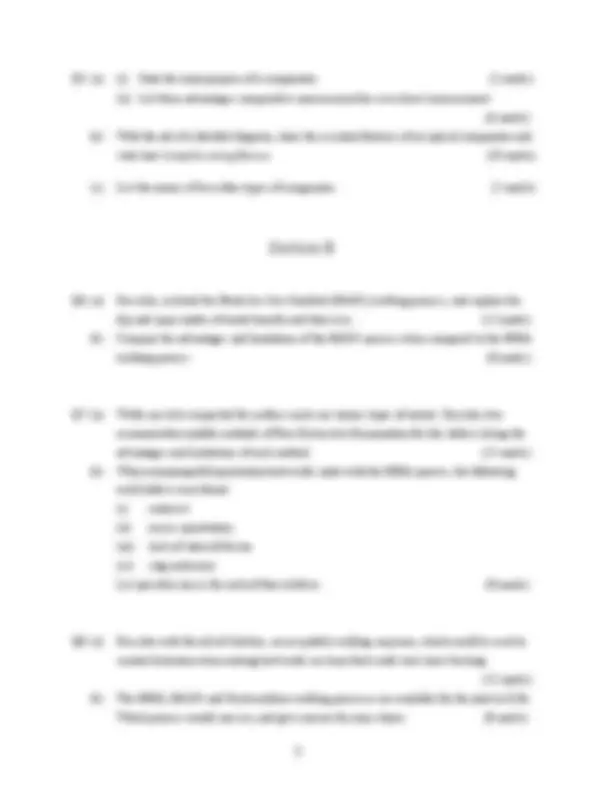



Study with the several resources on Docsity

Earn points by helping other students or get them with a premium plan


Prepare for your exams
Study with the several resources on Docsity

Earn points to download
Earn points by helping other students or get them with a premium plan
Community
Ask the community for help and clear up your study doubts
Discover the best universities in your country according to Docsity users
Free resources
Download our free guides on studying techniques, anxiety management strategies, and thesis advice from Docsity tutors
Main points of this past exam are: Up-Cut Milling, Control Systems, Feed Rate, Spindle Speed, Facilities, Arrangement, Cnc Lathe, Reference Points, Programme Already Installed, Memory
Typology: Exams
1 / 3

This page cannot be seen from the preview
Don't miss anything!


(NFQ – Level 6)
Instructions Answer FIVE questions, THREE from section A and TWO from Section B. Use separate answer books for each Section. All questions carry equal marks.
Examiners: Mr. R. Kennedy Mr. J. Burns Mr. R. Simpson Mr. J. Connolly
Q1. (a) On the majority of control systems (CNC Machines), there are facilities which enable the operator to manually change both the feed rate and spindle speed. Give four reasons for making use of this arrangement. (6 marks)
(b) While setting up the CNC lathe, describe the following using block diagrams: (i) how to approach the reference points (ii) how to call up a programme already installed in the memory of the machine. (4 marks)
(c) Assuming you already have a programme installed in the memory of the CNC lathe list the sequence of checks you would make to ensure the safe automatic machining of the work. (6 marks)
(d) Briefly describe four of the following in regard to CNC: (i) G00, (ii) G71, (iii) G01, (iv) M03, (v) M08, (vi) T0202. (4 marks)
Q2. (a) Differentiate between down-cut and up-cut milling in detail and list the advantages and disadvantages of both while using peripheral cutters. Use detailed diagrams to help illustrate your answer. (7 marks)
(b) Name and describe a special feature a machine must have for it to be a suitable for down- cut for milling. (3 marks)
(c) A flycutter with six inserts measuring 100mm in diameter is used to machine the top surface of a work piece to a depth of 3.5mm. The material measures 265mm long by 75mm in width. The cutter is operating at 30m/minute. The feed rate is 0.25mm per tooth (or insert). Calculate:- (i) The table feed in mm pre minute. (ii) The total length of cutter travel (including approach distance). (iii) The time required to take one cut. (10 marks)
Q3. (a) State the difference between grinding, honing and lapping. (6 marks) (b) Explain clearly the difference between loading and glazing of a grind wheel. (4 marks) (c) Discuss the cutting, self sharpening and wearing action of a grind wheel when grinding tough steel. (6 marks) (d) List the precautions which should be taken into account when fitting a grind wheel to a bench or pedestal grinder. (4 marks)
Q4. (a) With the aid a neat diagram, describe in detail the precision level and its applications. (7 marks) (b) Assuming you are involved in the installation of a centre lathe in a machine shop, using detailed diagrams describe the tests you would carry out to ensure the machine is levelled properly etc (7 marks) (c) With the a id of neat diagrams, describe two important alignment tests using test mandrels and dial gauges on a centre lathe. ( marks)